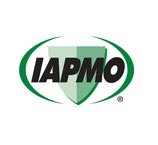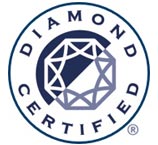How To Get Rid of Drain Flies
Share this Article
Drain flies or sewer flies are common but often overlooked insects associated with moist, highly organic areas such as sink drains, sewage pipes or sewage treatment facilities, storm drains, dung, and rotten vegetation says the expert Santa Cruz plumber. If you have a reoccurring problem that can’t easily be solved then most likely you have a cracked sewer line.
The immature stage or larva is considered beneficial, an essential part of the cycle that breaks down waste into water-soluble compounds. However, the adult flies can sometimes become numerous enough in the vicinity of breeding areas to be annoying to people.
Fruit flies or vinegar flies occasionally become a pest in homes, restaurants, fruit markets, or similar places containing food sources. Due to their small size, it is practically impossible to exclude them from buildings. Although Fruit flies can transmit pathogens to plants and animals, their importance is primarily the annoyance caused by their presence. Fruit flies are, brown-yellow or brown-black in color. They commonly have reddish eyes and are small.
Drain Flies Life Cycle
Fruit flies lay their eggs in cracks or in broken skin of fruit or vegetable material. Other breeding sites include wine, vinegar, cider, or beer. They will also breed in dishwater from sinks, drain water from refrigerators or water from floor scrubbing that contains food particles that will ferment under favorable conditions. Sour mops, brooms, rags, or paper are also likely breeding sites for fruit flies.
Elimination: Drain Cleaning
Plumbing Pro Tip of the Week
Tip #1 Only mechanical cleaning or biological cleaning agents work to kill the slime the larvae live in. If cleaning of the pipes does not work then the next most likely source of the problem is a broken sewer line.
Tip #2 Drain fly infestations can be eliminated only by removing the larval food source. The larvae usually breed in sink and bathroom drain traps, in spite of the hot water, soap, and other debris that flow through them.
Tip #3 Thorough cleaning of drain traps with drain cleaners (such as Drano) and long-handled brushes will remove hair and trapped debris. Bleach does not work to kill the larvae so don’t just pour bleach down the drain.
Tip #4 Determine the source of infestation by looking for concentrations of adult flies around potential larval habitats such as cooling towers, air conditioners, bird feeders, or other places containing standing water and vegetation.
PLUMBING TRADE SECRETS: Clean, remove or treat the breeding area. Infestations can also be located in a neighbor’s yard, shallow pools, or sewage treatment facilities, particularly those upwind from the nuisance area. In these cases, contact those people responsible for infested areas.
Published on: October 1, 2014
Updated on: January 25, 2021
Got Flooded Crawl Space?






